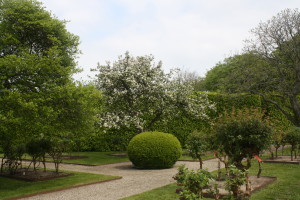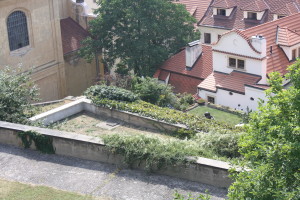Over the past few weeks, I’ve been looking at research on how we manage our yards and how those decisions impact the ecosystems around us. Certainly when we mow or fertilize or add ornamental species to our lawns we are altering the space, but there are other ways that we interact with our yards and the species (plant, animal, fungi, you name it) that live there. So what can we do to make our yards healthy, productive areas for wildlife and enjoyable recreational spaces for us? And can we help advance the science of lawn management?

Whether your yard is tiny or a large estate, there are many things you can do to make it more hospitable to wildlife while still enjoying the space yourself.
 As it turns out, there are lots of resources for information and many, many ways we can make small changes to how we care for the spaces around our homes. One of the suggestions from a study in New Jersey (Mitteager et al. 2006) when approaching our yards is to think about the yard image we want to see when we look outside rather than specific plants we want to use- that way we have more opportunities to incorporate native plant species while still getting the yard-feel we want.
As it turns out, there are lots of resources for information and many, many ways we can make small changes to how we care for the spaces around our homes. One of the suggestions from a study in New Jersey (Mitteager et al. 2006) when approaching our yards is to think about the yard image we want to see when we look outside rather than specific plants we want to use- that way we have more opportunities to incorporate native plant species while still getting the yard-feel we want.
A great place to look for information and even training in yard care is your local county agricultural extension or the agricultural schools at state colleges and universities. Many of these entities are doing lawn care research and have programs to assist you in better understanding your specific lawn conditions and your options for lawn care. A number of state and non-profit organizations have programs tailored to homeowners in local climates, but they also provide some general guidelines applicable to yards in a wide variety of places. Some informative examples include:
• The Lady Bird Johnson Wildflower Center sells a native turf mix for yards in Texas, as well as providing information on landscaping with native plants
• West Virginia has a Wild Yards Program, there are guidelines for Florida-Friendly Landscaping and UFL has a Living Green website, the University of Minnesota provides best practices for supporting insect pollinators, Maine has a Yardscaping program, and OSU’s guidance for butterfly gardens includes exotics to avoid
Working across a larger area,
• The Audubon Society has suggestions for hummingbird-friendly yards
• The EPA has a Greenscapes website with information on water conservation, landscaping, wildlife, and other yard care issues
And for those of you looking to really get into the nuts and bolts of your yards and then collect data for scientists
• Carol West (2013) provides instructions on how she did a lawn species inventory to better understand the diversity of her yard
• The Cornell Lab (the same group that runs the eBird site which lets you contribute bird sightings to help researchers track population and species changes) has a YardMap program where they ask you to map your yard- they want to know about plants, animals, etc. and they provide guides on making changes to how you manage the space. They also highlight amazing yards across the country. This program sounds fantastic and it makes me long for a yard of my own again!
There are many opportunities for us to create inviting, ecologically-minded yards that are fun for us and provide important ecosystem services for the environments around us. I’m pretty sure I’ve only scratched the surface of this and our options can take us in many different directions, but it seems that a few larger themes are relevant here: think about how often we mow our lawns and consider reducing the frequency and raising the height of the blades; think about how often we fertilize, water, and use pesticides and try to make these more efficient; and look for ways to incorporate general floral diversity, and specifically native plants, in our yards. Starting from there, we’ve got many options for making our yards greater forces for good.
Cited works:
Mitteager, WA, Burke, A and KF Nordstrom. 2006. Restoring natural landscapes on private shorefront properties in New Jersey, USA. Journal of Coastal Research SE 39: 890-897.
West, C. 2013. What’s in your lawn? Wellington Botanical Society Bulletin 53: 2-7.
